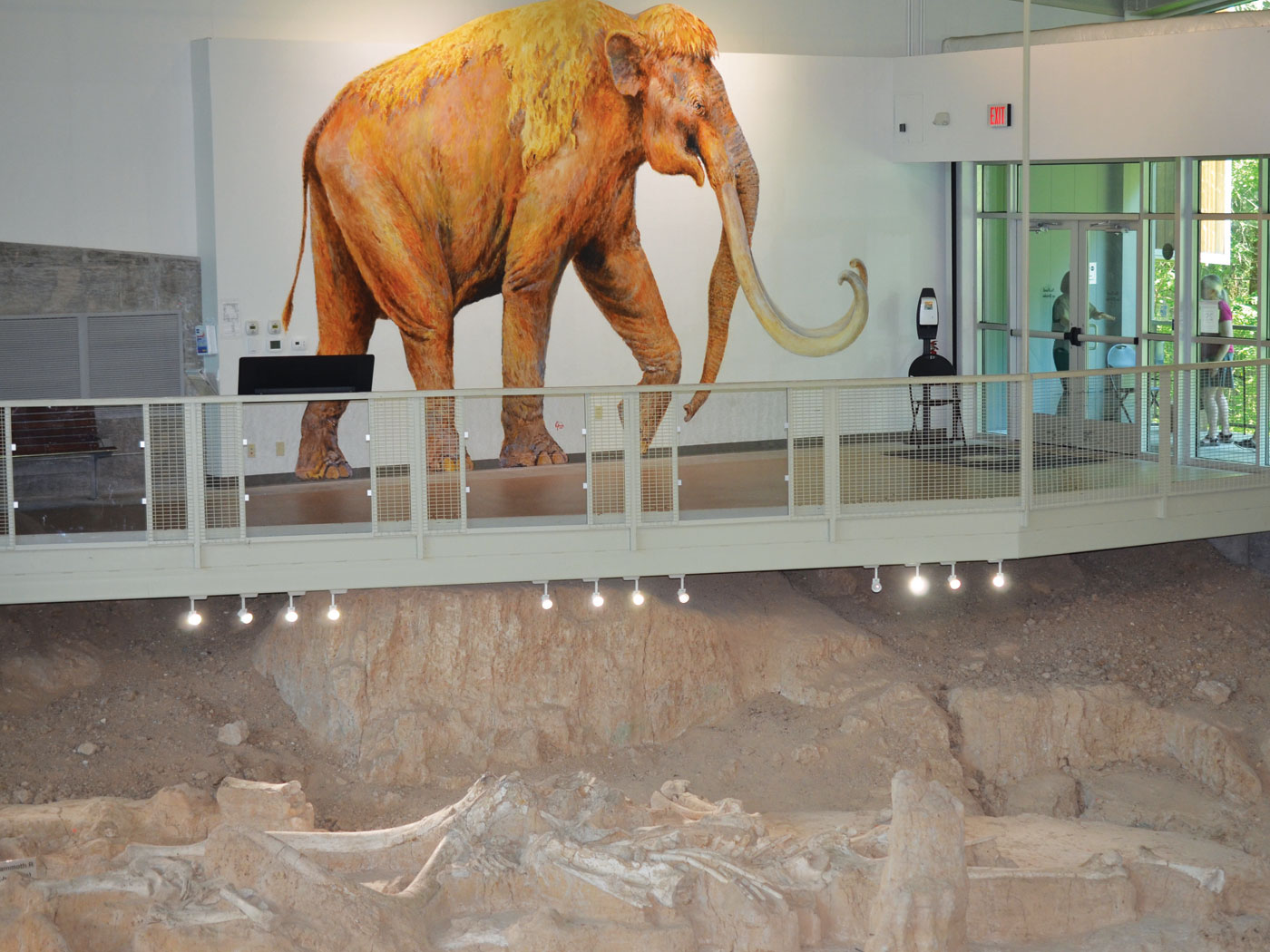Recently, video footage captured the spectacular collapse of an estimated 11,000 tons (22 million pounds) of rock, as a section of England’s Broadchurch cliffs catastrophically collapsed. The video footage may be seen in the link in the footnotes.1 The collapse of this section of the Broadchurch cliffs followed weeks of heavy rain.
The Broadchurch cliffs are part of England’s famous Jurassic Coast, a 95-mile-long section of the coastline that rings the southern portion of the country, and home to many of the historic ichthyosaur discoveries in the 19th century. It is the only place on Earth where Triassic, Jurassic, and Cretaceous rocks can be seen together in a single outcrop location. By conventional dating, these rocks together represent 185 million years of Earth history.2
Such catastrophic collapses are fairly common occurrences. A landslide twice the size of this one occurred at the Broadchurch cliffs in 2017.3 A catastrophic collapse of a section of the famous White Cliffs of Dover, also part of the Jurassic coastline, occurred in 2001, followed by a second collapse in 2012.4 Similar collapses have occurred along the Australian coastline in 2005 and 2009.5
Given this rapid observed erosion, how likely is it that these cliffs have been standing for hundreds of millions of years?
We can “put numbers” to the problem to help us answer the question. In 1973 creation geologist Steve Austin (then writing under a pseudonym) pointed out that erosion rates are so high that all the continents would be planted down to sea level in just 14 million years.6 Note that 14 million years is how long into the future the continents can survive, given today’s erosion rates. Moreover, at today’s rates, the sediments already present on the ocean floor would have accumulated in about 30 million years.6 So at most, both the past and future lifetimes of the continents can’t exceed tens of millions of years. Yet the evolutionary story requires them to be billions of years old!
Not surprisingly, Bible skeptics have attempted to respond to Austin’s devastating critique. Modern agriculture may be causing today’s erosion rates to be higher, perhaps by a factor of ten, than in the past.7 But that doesn’t help much, as that would mean the continents can’t be more than a few hundred million years old, still far too young to agree with the evolutionary story.
Or perhaps they would counter that mountains are rising faster than erosion is occurring. Or perhaps they would say that “old” rocks were shielded from erosion by younger overlying rocks that were themselves later eroded away.
However, these last two responses are not convincing, especially in areas that are believed to have not experienced uplift in hundreds of millions of years!8 An easy way to refute them is to recognize that there exists very old (by evolutionary reckoning) geological landforms, called paleoforms, on the Earth’s surface. Supposedly, these landforms have been exposed to erosion at the Earth’s surface for hundreds of millions of years, unprotected from erosion by overlying rocks. Yet they still exist:
Paleogeographic reconstructions indicate that parts of the Australian continent have been subaerially exposed [i.e., exposed at the surface] for hundreds of millions of years. Some landforms and regolith are demonstrated to be at least 300 million years old, but their persistence at or near the surface is inconsistent with long-term denudation rate estimates based on cosmogenic nuclides and apatite fission track thermochronology.9
Examples of paleoforms include the inselbergs Uluru in central Australia and Devil’s Tower in South Dakota (USA),10 as well as the subglacial Gamburtsev Mountains in East Antarctica.11,12 The very existence of such ancient landforms is an enigma to evolutionary geologists, as they acknowledge that proposed mechanisms to explain their continued existence often do not work or aren’t applicable:
Paradoxically, however, none of the mechanisms that have been proposed to explain the survival of paleoforms hold here [in southeastern Australia]. These instances may well be typical of large parts of the interior of tectonic plates, and a revision of widely held estimates of modal rates of denudation seems required.13
So despite the glib rebuttals of some Bible skeptics, conventional geologists are not so sure that they can convincingly reconcile measured erosion rates with “deep time”. If erosion can plane all the continents down to sea level in just 14 million years, or 140 million years at most, how can much smaller landforms like Uluru still exist, if they have indeed been exposed to erosion at the surface for hundreds of millions of years? The simple answer is that they can’t. The Earth’s continents just aren’t that old.
So, as the cliffs along the Jurassic coast continue to crumble, so crumbles the old-Earth evolutionary story. Earth and its landforms are young, as one would infer from a straightforward reading of Genesis, since the Lord Jesus Christ created them just 6,000 years ago.
References
1. Aspinall, A. Horror moment more than 1,000 tonnes of rock fall from cliffs made famous by Broadchurch. The Mirror. Posted at mirror.co.uk January 27, 2023, accessed February 2, 2023.2. Jurassic Coast Trust, posted at https://www.jurassiccoast.org, accessed February 2, 2023.
3. Crouch, H. Sheer Stupidity. Sunbathers slammed as idiots for relaxing at the bottom of crumbling Broadchurch cliffs just days after a 2,000-ton rock slide. The Scottish Sun. Posted on thescottishsun.co.uk July 3, 2017, accessed February 2, 2023.
4. Sherwin, F. Rapid Erosion Supports Creation Model. Creation Science Update. Posted on ICR.org January 25, 2016, accessed February 2, 2023.
5. Catchpoole, D. 2015. A Dangerous View. Creation 37 (2): 12-15.
6. Nevins, S. 1973. Evolution: The Ocean Says NO! Acts & Facts 2(8).
7. Ball, P. The earth moves most for humans. Nature News. Posted on nature.com March 7, 2005, accessed February 2, 2023.
8. Hebert, J. 2019. Five Global Evidences for a Young Earth. Acts & Facts 48 (7).
9. Pillans, B. 2007. Pre-Quaternary Landscape Inheritance in Australia. Journal of Quaternary Science 22 (5): 439-447. Emphasis added.
10. Oard, M. J. 2017. Inselbergs: Evidence for Rapid Flood Runoff. Creation 39 (1): 46-49.
11. Oard, M. J. 2016. Little erosion beneath Antarctica and Greenland ice sheets. Journal of Creation 30 (1): 11-13.
12. Hebert, J. 2021. ICR Ice Core Research Continues. Acts & Facts 51 (1).
13. Young, R. W. 1983. The Tempo of Geomorphological Change: Evidence from Southeastern Australia. The Journal of Geology 91 (2): 221-230. Emphasis added.
* Dr. Hebert is Research Scientist at the Institute for Creation Research and earned his Ph.D. in physics from the University of Texas at Dallas.
















